1. Dighe A, Cattarino L, Cuomo-Dannenburg G, Skarp J, Imai N, Bhatia S, et al. Response to COVID-19 in South Korea and implications for lifting stringent interventions. BMC Med. 2020; 18(1):321. PMID:
33032601.

2. Choi S, Ki M. Analyzing the effects of social distancing on the COVID-19 pandemic in Korea using mathematical modeling. Epidemiol Health. 2020; 42:e2020064. PMID:
32898942.

3. Brooks SK, Webster RK, Smith LE, Woodland L, Wessely S, Greenberg N, et al. The psychological impact of quarantine and how to reduce it: rapid review of the evidence. Lancet. 2020; 395(10227):912–920. PMID:
32112714.

4. Wang Y, Shi L, Que J, Lu Q, Liu L, Lu Z, et al. The impact of quarantine on mental health status among general population in China during the COVID-19 pandemic. Mol Psychiatry. 2021; 26(9):4813–4822. PMID:
33483692.

5. Pfefferbaum B, North CS. Mental health and the COVID-19 pandemic. N Engl J Med. 2020; 383(6):510–512. PMID:
32283003.

6. Culpepper L, Muskin PR, Stahl SM. Major depressive disorder: understanding the significance of residual symptoms and balancing efficacy with tolerability. Am J Med. 2015; 128(9):Suppl. S1–15. PMID:
26337210.

7. Saragoussi D, Christensen MC, Hammer-Helmich L, Rive B, Touya M, Haro JM. Long-term follow-up on health-related quality of life in major depressive disorder: a 2-year European cohort study. Neuropsychiatr Dis Treat. 2018; 14:1339–1350. PMID:
29872301.

8. Ettman CK, Abdalla SM, Cohen GH, Sampson L, Vivier PM, Galea S. Prevalence of depression symptoms in US adults before and during the COVID-19 pandemic. JAMA Netw Open. 2020; 3(9):e2019686. PMID:
32876685.

9. Ha SK, Lee HS, Park HY. Impact of COVID-19 on individual depression and quality of life: focusing on differences by age group. Ther Sci Rehabil. 2021; 10(3):111–122.
10. Seong G, Kim S. The impact of changes in daily life due to COVID-19 on corona-blue. Couns Psychol Educ Welf. 2021; 8(5):67–79.

11. Alsolais A, Alquwez N, Alotaibi KA, Alqarni AS, Almalki M, Alsolami F, et al. Risk perceptions, fear, depression, anxiety, stress and coping among Saudi nursing students during the COVID-19 pandemic. J Ment Health. 2021; 30(2):194–201. PMID:
33978543.

12. Suárez-Rico BV, Estrada-Gutierrez G, Sánchez-Martínez M, Perichart-Perera O, Rodríguez-Hernández C, González-Leyva C, et al. Prevalence of depression, anxiety, and perceived stress in postpartum mexican women during the COVID-19 lockdown. Int J Environ Res Public Health. 2021; 18(9):4627. PMID:
33925373.

13. Knipe D, Evans H, Marchant A, Gunnell D, John A. Mapping population mental health concerns related to COVID-19 and the consequences of physical distancing: a Google Trends analysis. Wellcome Open Res. 2020; 5:82. PMID:
32671230.

14. Stijelja S, Mishara BL. COVID-19 and psychological distress-changes in internet searches for mental health issues in New York during the pandemic. JAMA Intern Med. 2020; 180(12):1703–1706. PMID:
33016982.

15. Lin YH, Chiang TW, Lin YL. Increased internet searches for insomnia as an indicator of global mental health during the COVID-19 pandemic: multinational longitudinal study. J Med Internet Res. 2020; 22(9):e22181. PMID:
32924951.

16. Knipe D, Gunnell D, Evans H, John A, Fancourt D. Is Google Trends a useful tool for tracking mental and social distress during a public health emergency? A time-series analysis. J Affect Disord. 2021; 294:737–744. PMID:
34348169.

18. American Psychiatric Association (APA). Diagnostic and Statistical Manual of Mental Disorders, Fifth Edition (DSM-5). Washington, D.C.: APA;2013.
20. Bernal JL, Cummins S, Gasparrini A. Interrupted time series regression for the evaluation of public health interventions: a tutorial. Int J Epidemiol. 2017; 46(1):348–355. PMID:
27283160.
23. Massaro M, Kim S. Why is South Korea at the forefront of 5G? Insights from technology systems theory. Telecomm Policy. 2021; 102290.

24. Kang M, Zhong H, He J, Rutherford S, Yang F. Using Google Trends for influenza surveillance in South China. PLoS One. 2013; 8(1):e55205. PMID:
23372837.

25. Senecal C, Mahowald M, Lerman L, Lopes-Jimenez F, Lerman A. Increasing utility of Google Trends in monitoring cardiovascular disease. Digit Health. 2021; 7:20552076211033420. PMID:
34873449.

26. Barros JM, Melia R, Francis K, Bogue J, O’Sullivan M, Young K, et al. The validity of Google Trends search volumes for behavioral forecasting of national suicide rates in Ireland. Int J Environ Res Public Health. 2019; 16(17):3201.

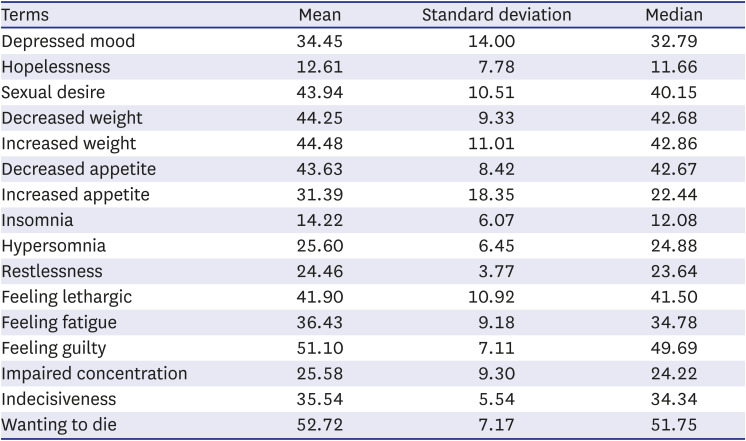
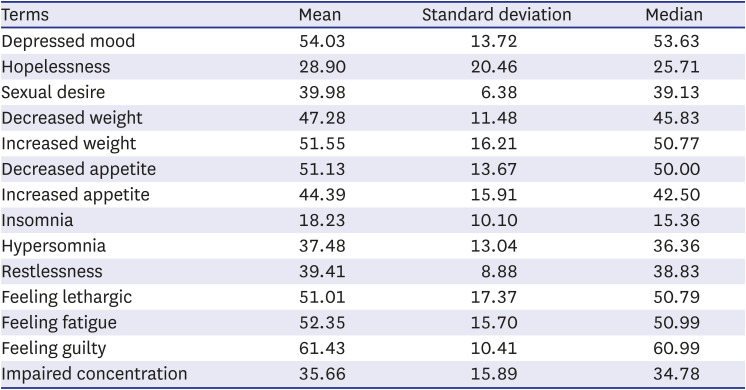
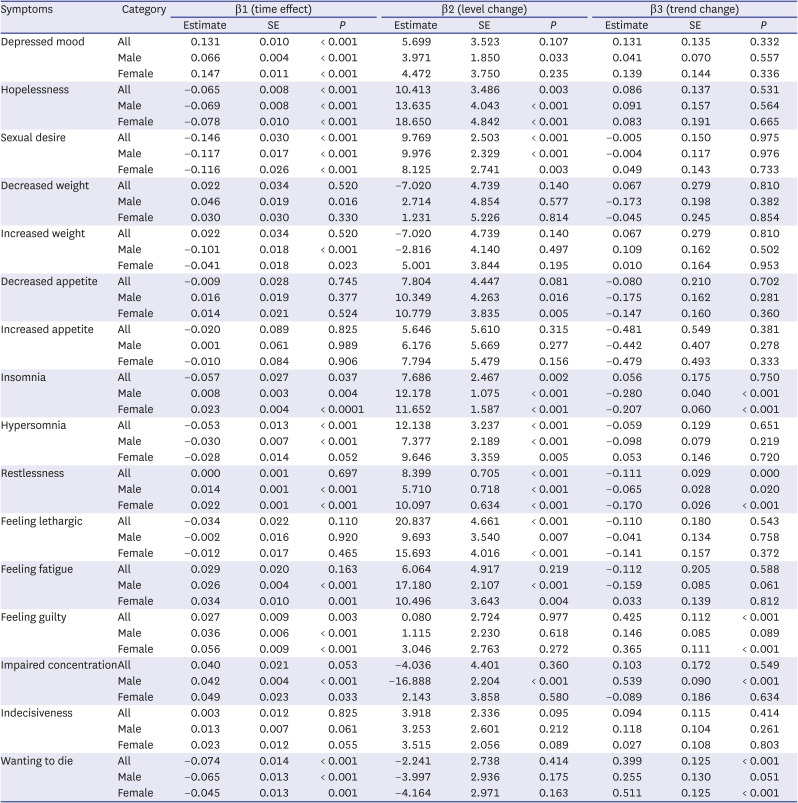
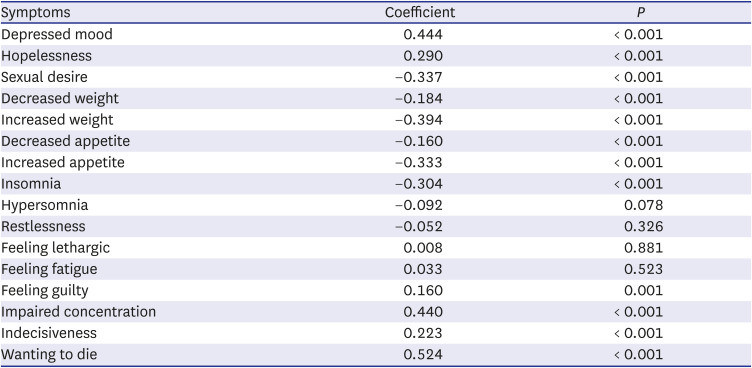
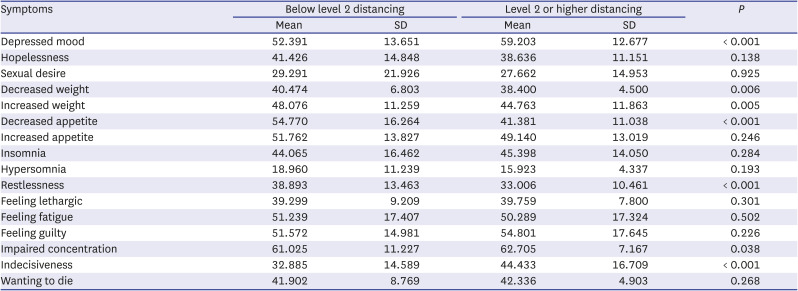




 PDF
PDF Citation
Citation Print
Print



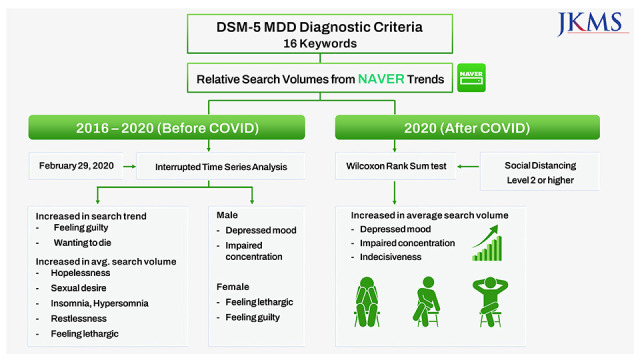
 XML Download
XML Download